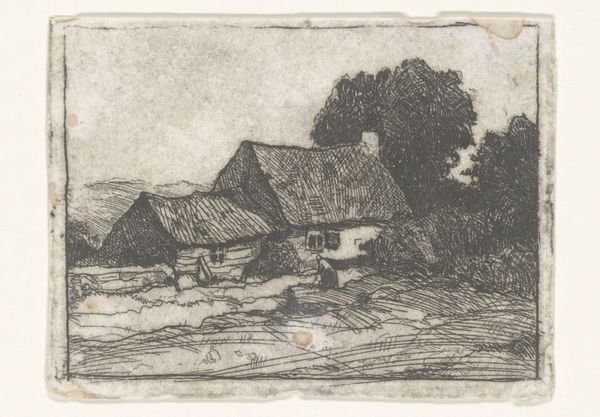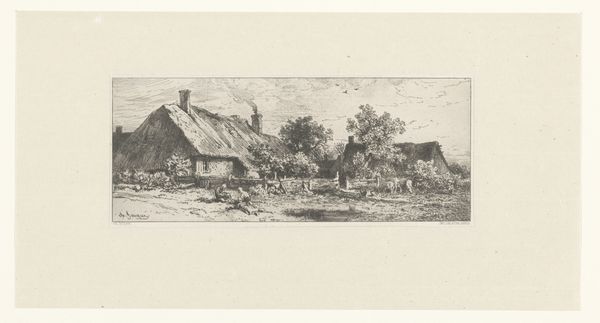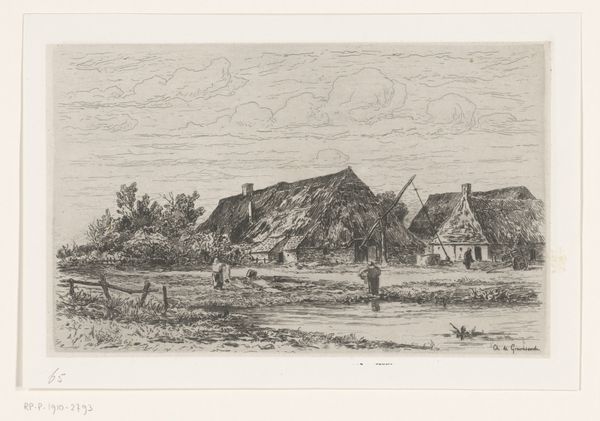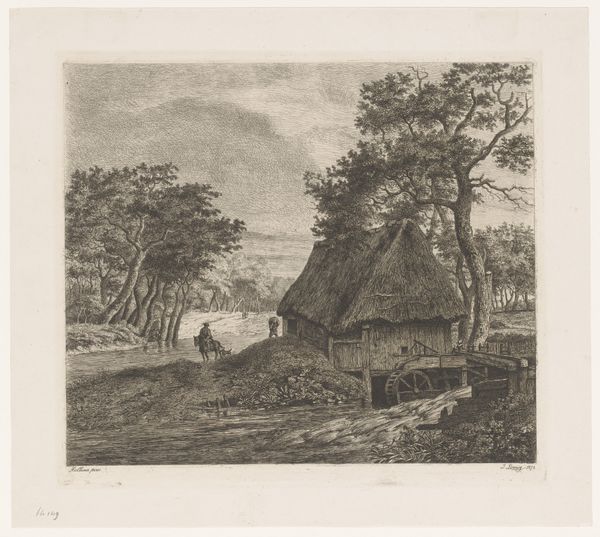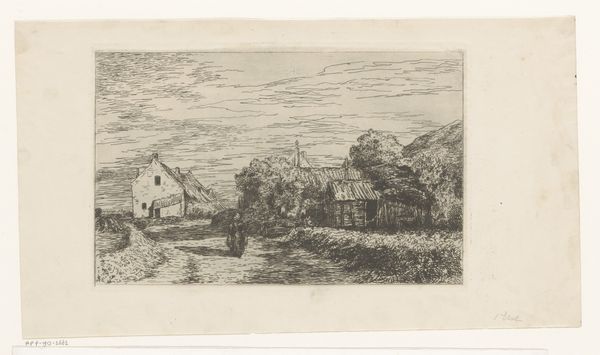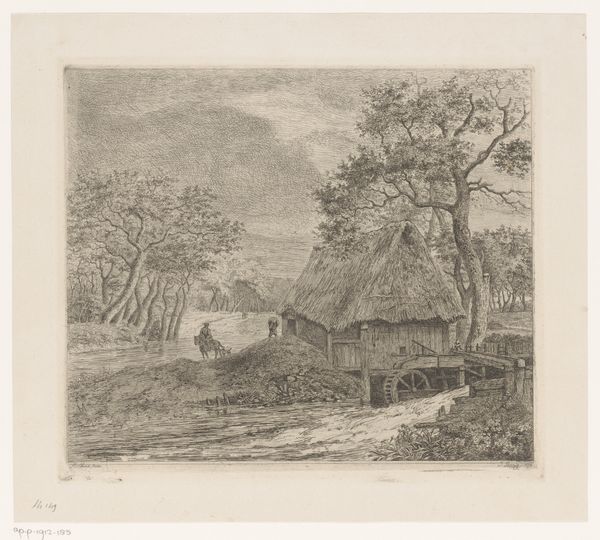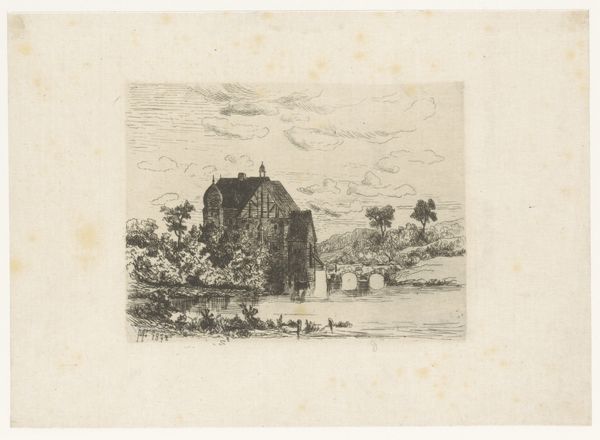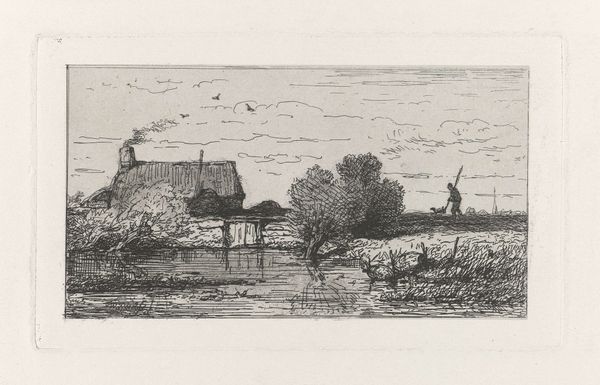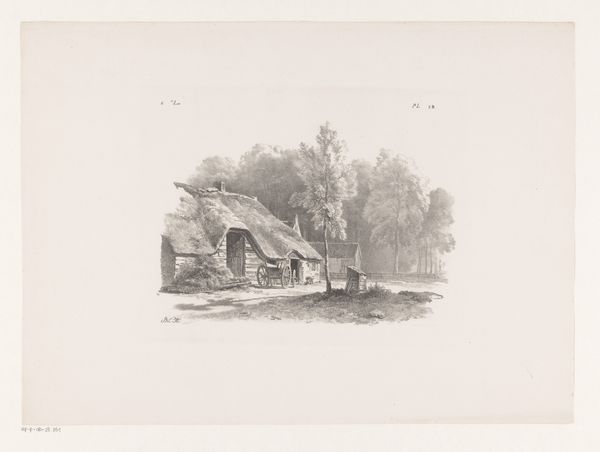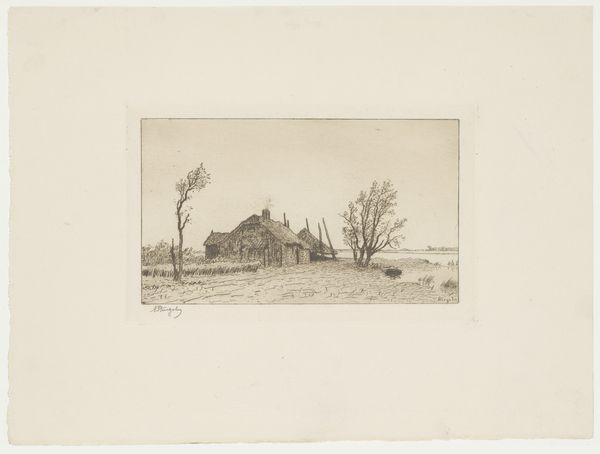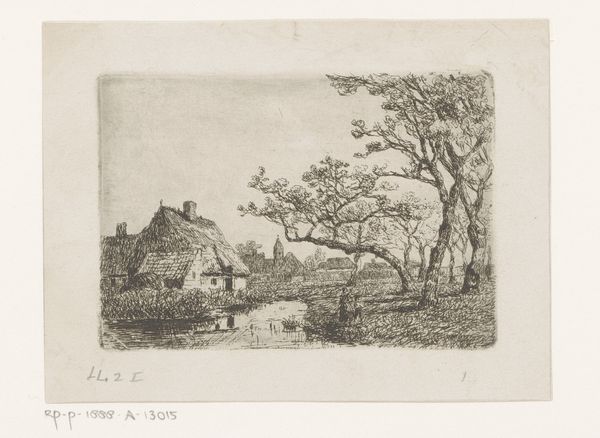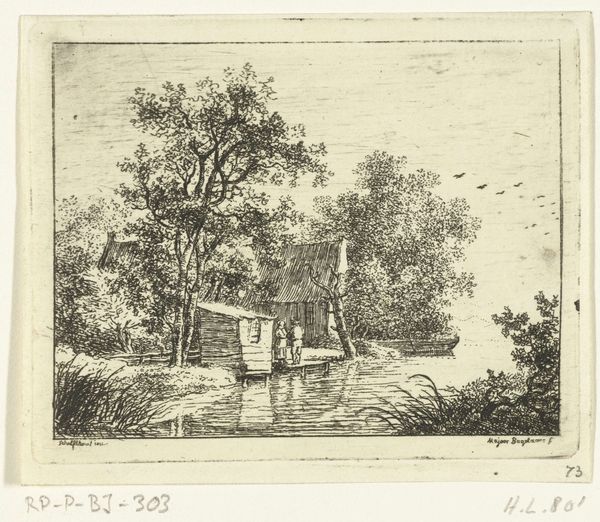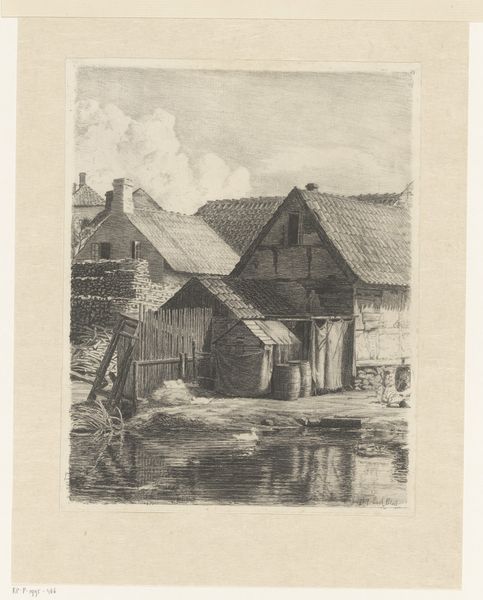
drawing, print, etching, paper
#
drawing
# print
#
etching
#
landscape
#
paper
#
genre-painting
#
realism
Dimensions: height 134 mm, width 210 mm
Copyright: Rijks Museum: Open Domain
Curator: I am taken by the stark beauty of this etching, all in shades of charcoal it almost has a brooding feel, but what is your impression? Editor: Immediately, I see the convergence of genre painting and realism reflecting social realities of the mid-19th century in the Dutch countryside. The lack of adornment directs our attention toward rural existence in the Netherlands during that era. Curator: Right, we see Willem Roelofs, a Dutch artist deeply influenced by the Hague School. The Rijksmuseum has this work cataloged as “Woman in landscape with farmhouse and barn” created somewhere between 1847 and 1875 using etching on paper. And for me, Roelofs uses light so masterfully; despite being a monochrome work, it has such texture. Editor: Indeed. Roelofs captures not just the visuals, but the essence of the ordinary and his focus extends beyond mere aesthetic appeal by presenting unromanticized realities in his genre-paintings, offering insights into daily life shaped by broader economic, social, and gendered forces at work. I am drawn to the depiction of women in that she carries out agricultural labor that would traditionally belong to her male counterparts. Curator: I'm sensing your feminist read on the placement of the solitary female figure. And that actually resonates with my experience. The small scale makes the wide landscape all the more dominant. I am almost swallowed by it! What would you say that contributes to this experience of that isolation, that existence? Editor: That’s it: the tension created is symbolic of societal subjugation. Rural life as an allegory and social commentary. By capturing its gritty details he not only represented but elevated his subject in the art world which has historically prized paintings above the toiling classes of his day. Curator: Which really brings us full circle to our time. And I just find something comforting in these older artworks speaking to our current discourse on marginalized identities. Any final thought on this understated work before we move on? Editor: Only that I find this to be more than a mere etching—it's a microcosm reflecting tensions of class, gender, and social existence frozen in time but perpetually relevant.
Comments
No comments
Be the first to comment and join the conversation on the ultimate creative platform.

